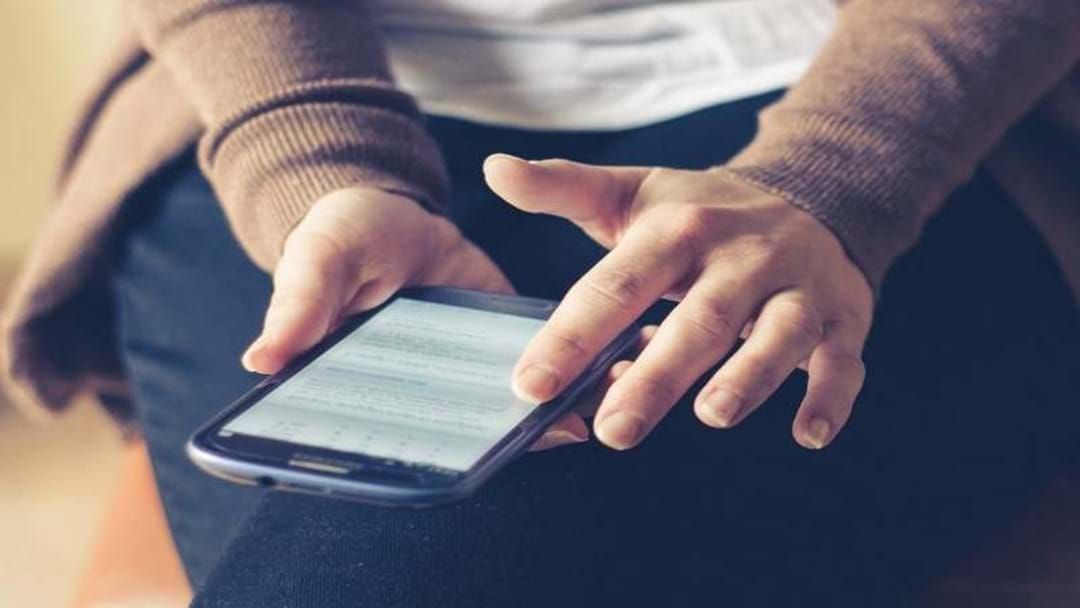Tasmanians more connected to social media than everyday life
Biggest users of instagram & snapchat

Tasmanians say they feel more connected to social media than everyday life and we are more likely than any other state to post food pics to instagram.
A new report shows 28% of Tassie social users say they suffer separation anxiety if they can’t check their accounts.
The study, from digital experts Sensis, surveyed 800 Australian consumers and 1,100 businesses and found 86% of Tasmanians are now connected to social media platforms, a 14 point increase from last year.
A huge 70% of Tasmanians are on social media at least once a day – the equal highest rate nationally.
While locals are the most likely to accept friend requests from people they don’t know (45% vs 31% average), they are also the least likely to see their friends or followers face to face during the year (29% vs 39% average).
We are prolific posters while on the move too, including when on public transport (62%) or in the car (54%), but the stats also shows home posting a real favourite with the popular spots being the living room (91%), bedroom (85%) and even the bathroom (14%).
Evenings top the poll for peak posting times (82%) with another preferred time of day being during break times (71%).
While usage of Facebook has held at 97% this year, adoption of visual platforms has skyrocketed in the past twelve months.
Tasmanians are now the biggest users of Instagram (leaping from 40% to 64%) and Snapchat (jumping from 38% to 64%).
Sensis Digital Spokesperson, Rob Tolliday said: “Favouring visual rather than text-based platforms enables people to capture what they were doing ‘in the moment’ and share their experiences with their friends and followers quickly and easily.
“Tasmanians are selfie-obsessed and lead the states when it comes to posting about food. They are also most likely to share someone else’s post – it seems liking, sharing and swiping is a new favourite pastime,” he said.
Tasmanians have also led the adoption of the new story functions across Facebook, Instagram and Snapchat (75% vs 52% average).
Nick Glozier, Professor of Psychological Medicine at the Brain and Mind Research Institute, Sydney Medical School said: “Excessive social media use may be re-wiring people’s brains, with every like or retweet acting as a reward and releasing small doses of dopamine that leave us happy. As a result we adapt our behaviour to chase further chemical rewards within the brain, and feel craving like symptoms and anxiety when we can’t get them.”
“A recent US study found that narcissism is on the rise among young people, as are anxiety and distress. No doubt social media is having a significant impact, as people feel pressure to compete in a fantasy world of posts that sometimes bear little resemblance to the reality of their day to day lives,” he said.
Across the nation statistics from the 2017 Sensis Social Media Report showed:
- Almost eight in 10 people (79%) are now using social media, a 10 point increase from 2016
- Ninety-nine percent of 18-29 year olds are now using social media, although the biggest jumps this year were in the 30-39 age group (up 14 points to 96%) and the 40-49 age group (up 16 points to 86%)
- Almost six in 10 are now using social media in the bedroom, up from 42% to 59% this year, and rising to 94% among 18-29 year olds
- Males (36% vs 27%) and 18-29 year olds (74% vs average of 31%) are more likely to make friends with strangers on social media
- Four in 10 have posted food porn on social media and this is more common among men (43% vs 38%) and 18-29 year olds (82%), while similar numbers have posted selfies (45% average and 88% for 18-29s)
- 40-49 year olds are twice as likely to have been bullied (11% vs 6% average) and the most likely to have witnessed bullying on social media (28% vs 18% average)
Page 2 of 2
- Sixty-three percent of 18-29 year olds have been excited when their post has received more likes on social media than they expected
“Social media is breaking down long established social norms. Whereas it was once considered rude to be on your phone in public, it is increasingly seen as acceptable to check social media in almost any situation, with a third of 30-39 year olds happy to “phub” their family and friends at dinner,” said Mr Tolliday.